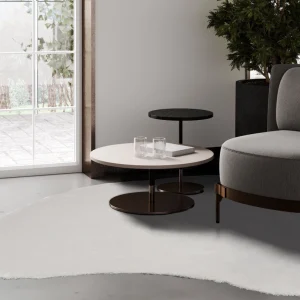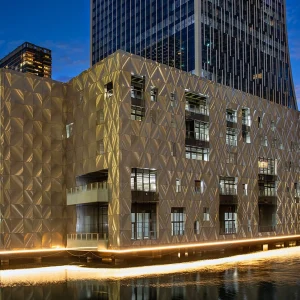By Cate St. Hill
Designed by Zurich-based Vehovar & Jauslin, the reflective and semi-translucent ETFE canopy appears as if it is floating above the bus terminal. Architects Mateja Vehovar and Stefan Jauslin wanted the canopy to create an area of calm between the busy Bahnhofstrasse and the new railway station and a welcoming zone between the Swiss Federal Railways and Aarau’s regional buses.

At the centre of the air-cushioned membrane is an organically shaped opening to give the feeling of being out in the open, yet protected from the elements. The translucent, slightly blue membrane features a fine print by Stefan Jauslin with Paolo Monaco, while an irregular network of stainless steel cables below the cushion is designed to give the membrane the required span. The bubble-like pattern of the membrane gives the flat surface of the ETFE more texture and attempts to camouflage the supporting structure below.

Vehovar & Jauslin brought in structural engineers formTL at an early stage to help design the support structure and membrane skin. With a volume of 1810 cu m, the roof of the bus station can claim the title of the world’s largest single-chamber membrane air cushion. Four 120-metre long polyethylene tubes under the road supply the pneumatic air cushion with recirculated clean, dry air, and another four tubes take the air back to the air control unit.

The canopy is supported by a series of slightly slanting columns and a faintly discernible internal structure to give the impression of lightness. Viewed obliquely, the supports fade into the background and the canopy gains volume.

‘If you get off at the train station, you should realise immediately that you’re in Aarau. The generous, open and urban station square is a comfortable, light space for all, structured by light islands and unique materials,’ says Vehovar and Jauslin. ‘The transparent roof with a gap in the middle spans the site like a flower, sheltering the passengers but leaving enough air that it doesn’t feel like a closed building.’





